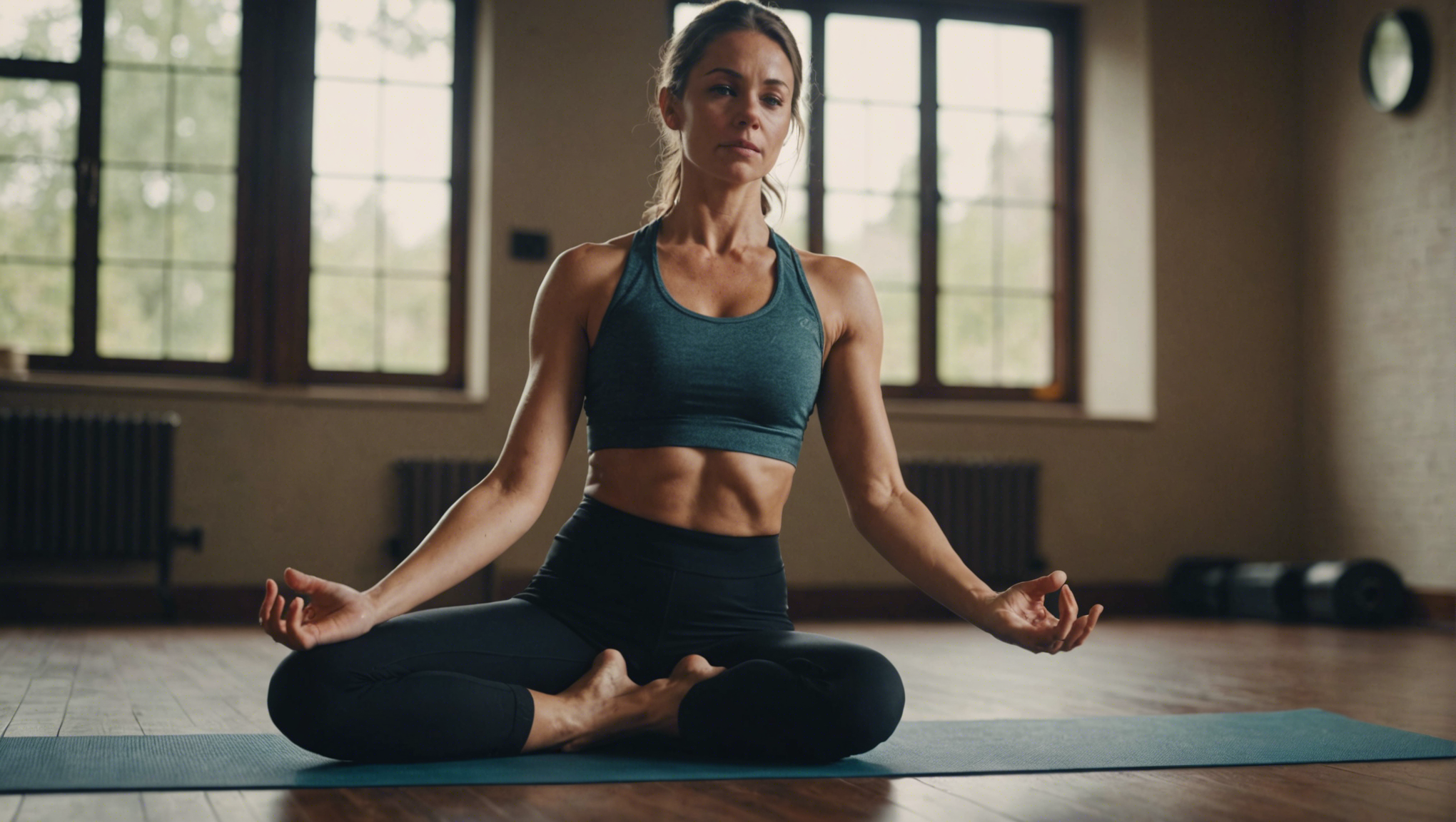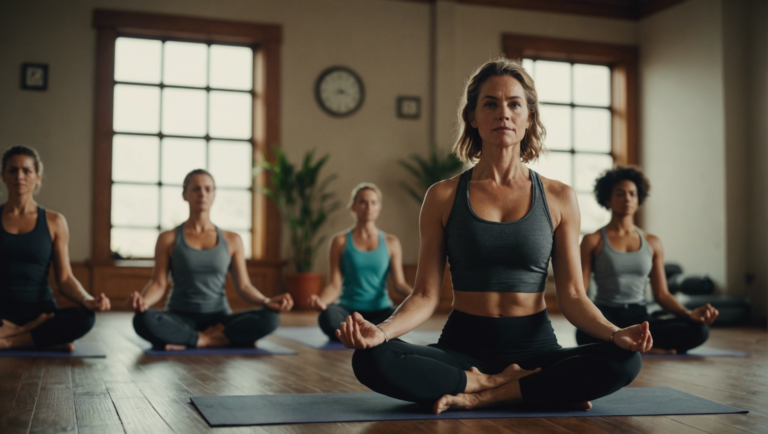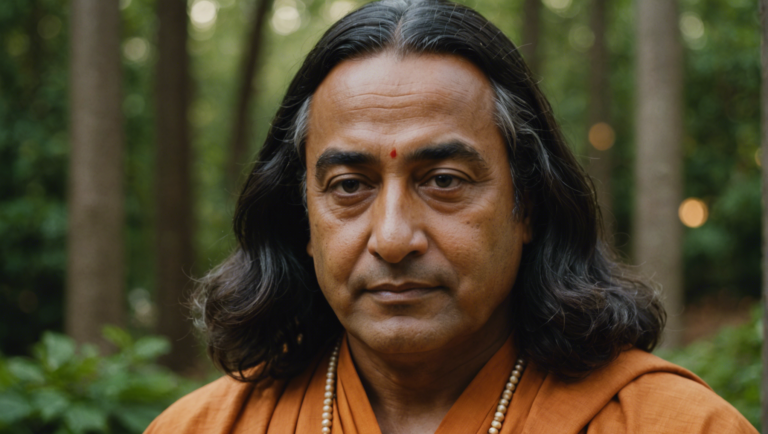Optimal Timing: When Should Yoga Be Done For Maximum Benefits?
Unveiling the Optimal Timing for Yoga: Maximizing Its Benefits
Discovering the Perfect Time for Yoga Practice
Yoga, with its profound benefits on mental, physical, and spiritual well-being, has emerged as a sanctuary for many in the bustling rhythm of contemporary life. Often, enthusiasts and beginners alike ponder over a fundamental aspect that could potentially magnify these benefits: the timing of their practice. The temporal context of yoga practice, indeed, plays a pivotal role in optimizing its outcomes.
The Dawn Advantage: Embracing Yoga with the Sunrise
Embarking on your yoga journey with the first light of dawn is not merely a traditional recommendation but a strategy backed by science and seasoned practice. The serene tranquility of morning hours aligns perfectly with the essence of yoga, which aims at harmonizing body and mind. Practicing yoga at sunrise, usually around 5:30 to 6:30 AM, ensures that one can tap into the serene ambiance, making it easier to focus and meditate. This period, known as the ‘Brahma muhurta’ in ancient texts, is believed to be highly conducive for achieving a deeper meditative state and enhanced Sattva (purity) qualities. The morning air, rich in oxygen and free from the day’s pollution, also supports better breathing exercises and invigorates the body for the day ahead.
The Sunset Sessions: Unwinding in the Evening Glow
For those who find the morning rush unaccommodating for a yoga routine, the next best alternative lies in the calm of the evening. As the day winds down, engaging in yoga can serve as a potent stress-reliever, helping to unclutter the mind and soothe the body. Evening yoga sessions, ideally scheduled around sunset or in the early evening hours between 5:00 to 7:00 PM, support the body’s natural shift towards rest. During this time, engaging in softer, more restorative yoga poses can promote relaxation and prepare the body for a restful sleep, making it an ideal routine for those battling insomnia or sleep disturbances.
Mid-Day Moments: Flexibility in Your Schedule
While the sunrise and sunset timings hold the promise of enhanced benefits, the modern lifestyle may not always accommodate these ideal slots. For those juggling various commitments, sneaking in a mid-day yoga session can still offer considerable advantages. The key here is flexibility and listening to your body’s rhythm. A short yoga break during lunchtime, for example, can reinvigorate the mind and offset the afternoon slump, boosting productivity for the day’s second half. However, it’s advisable to wait at least two hours after eating before practicing to avoid any discomfort.
Personal Rhythms: Tailoring Yoga to Your Unique Clock
Amidst the debate on optimal timing, the most critical factor remains personal preference and bodily rhythms. Our bodies have unique internal clocks, and aligning our yoga practice with our natural propensity can amplify the benefits manifold. Some may find their bodies more receptive and flexible in the evening, while others experience peak energy levels in the morning. Listening to your body and experimenting with different timings can ultimately guide you to your personal best time for yoga.
Nurturing Consistency: The Underpinning of Success
Regardless of the chosen time for practice, consistency emerges as the cornerstone of reaping the maximum benefits from yoga. Establishing a routine, even if it means adjusting the timing to fit into a hectic lifestyle, helps in cultivating discipline, enhancing focus, and gradually elevating the overall quality of life.
Yoga, a practice steeped in ancient wisdom, offers a path to inner peace and physical wellness. By mindfully selecting the optimal timing for practice, one can unlock its full potential, ensuring a harmonious balance between mind, body, and the rhythms of nature. In this journey, personal intuition and consistency are your true guides, steering you towards a practice that not only fits into your day but also elevates your entire being.
Morning Yoga Rituals: Kickstarting Your Day with Enhanced Vitality
Embarking on your day with a series of yoga poses can significantly transform your morning routine, infusing it with an invigorating sense of purpose and vitality. The age-old practice of yoga is not just about flexibility or strength; it’s a holistic approach to starting your day with enhanced mindfulness, energy, and overall wellness. This article delves into the profound benefits of morning yoga rituals and offers practical tips to seamlessly integrate them into your daily life, ensuring a kickstart to your day that is both empowering and rejuvenating.
Why Morning Yoga Transforms Your Day
Yoga in the morning acts as a powerful catalyst for a positive day ahead. It sets a calm, yet energized tone that can improve focus, reduce stress, and boost mood. The practice leverages the body’s morning energy reserves, making it an optimal time for stretching and mindful breathing. Engaging in yoga upon waking helps in releasing any stiffness from the night’s sleep, enhancing blood circulation, and kickstarting the body’s metabolism.
The Science Behind Morning Yoga
Scientific studies have shown that morning exercise, including yoga, can positively affect the body’s circadian rhythm, aiding in better sleep patterns and increased alertness during the day. Yoga’s meditative component also contributes to lower cortisol levels, offering a serene start to the day away from the stress and hustle that might follow.
Tailoring Your Morning Yoga Routine
While the thought of an early yoga session may seem daunting to some, it’s about finding a routine that resonates with you. Even a short 15-minute series of gentle stretches and breath work can significantly impact your wellness. poses like Sun Salutations, Cat-Cow stretches, and Downward Dog can dynamically awaken the body, while a few minutes of meditation or pranayama (breath control) practices center the mind.
Overcoming Common Obstacles
One of the main challenges people face is the struggle to rise earlier or find time in their morning for yoga. To navigate this, consider preparing your yoga space the night before, laying out your mat and any accessories you might need. This visual cue can serve as motivation. Moreover, reminding yourself of the post-yoga feeling of tranquility and achievement can also be a powerful motivator.
Enhancing Your Practice with Mindfulness
To truly reap the benefits of morning yoga, it’s essential to engage with each pose mindfully, focusing on breath and body alignment. This attentiveness fosters a deeper connection to the present moment, offering a form of moving meditation that prepares you mentally for the day ahead.
Consistency Is Key
As with any habit, consistency is crucial. Committing to a morning yoga practice, even on days when it feels challenging, promotes discipline and strengthens willpower, attributes that are beneficial beyond the mat. It’s about prioritizing your well-being and recognizing that each morning offers a new opportunity to nourish your body and mind.
Integrating Yoga into Your Morning Routine
Begin by setting realistic expectations. If you’re new to yoga or morning routines, start small. A few simple poses or even a brief meditation can suffice. Gradually, as it becomes a habit, you can extend your practice time. Remember, it’s not about perfection but progression. Celebrate the small victories, like choosing to roll out your mat even when you’re not feeling up to it.
The Journey Begins with You
Ultimately, the enriched vitality and profound sense of calm that morning yoga brings is a journey that begins with you. It’s a personal exploration of how your body and mind connect, how breath can transform your energy, and how each morning can be a canvas for self-care and mindfulness. Whether you’re a seasoned yogi or new to the practice, embarking on this morning ritual can significantly enhance the quality of your daily life, offering a sanctuary of peace before the day’s demands encroach.
Yoga extends an invitation to explore, to breathe, and to grow. Accepting this invitation each morning is not just a practice but a celebration of life itself.
Evening Asanas: How Evening Yoga Can Promote Restorative Sleep
The transformative power of yoga is universally acknowledged, intertwining the physical with the mental to induce a state of balance and harmony. Among its manifold benefits, yoga’s ability to foster restorative sleep stands out, particularly when practiced in the evening. The rhythm of the day unwinds as dusk falls, making it an opportune moment to engage in a series of asanas designed to prepare the body and mind for a night of deep, rejuvenating sleep.
The Science Behind Yoga and Sleep
Research has persistently highlighted the positive effects of regular yoga practice on sleep quality. Evening yoga routines, especially, can act as a natural remedy for insomnia and other sleep disorders. This is attributed to yoga’s capacity to decrease cortisol levels, the stress hormone, ensuring that our nervous system shifts from the stress-induced ‘fight or flight’ mode to a more relaxed ‘rest and digest’ state. Engaging in gentle stretches and controlled breathing exercises can significantly alleviate physical tension and mental stress, paving the way for improved sleep patterns.
Preferred Asanas for Evening Practice
Not all yoga poses are suitable for an evening routine aimed at promoting sleep. The focus should be on calming, grounding asanas that facilitate the body’s natural transition towards sleep. Poses like Balasana (Child’s Pose), Viparita Karani (Legs Up the Wall Pose), and Supta Baddha Konasana (Reclining Bound Angle Pose) are excellent examples. These asanas gently stretch and relax the body while calming the mind, making them perfect for evening practice.
The Role of Pranayama in Enhancing Sleep Quality
Pranayama, or the practice of breath control, is another crucial component of a nighttime yoga routine. Techniques like Anulom Vilom (Alternate Nostril Breathing) and Bhramari Pranayama (Bee Breath) are particularly effective in calming the mind and reducing stress and anxiety. By focusing on the breath, the mind is deterred from wandering, achieving a state of inner peace conducive to sleep.
Integrating Meditation for a Holistic Approach
Inclusion of a meditation practice at the end of the yoga session can amplify the sleep-inducing effects of the asanas and pranayama. Meditation encourages mindfulness and helps in releasing the day’s stressors, by bringing attention to the present. A simple guided meditation or the practice of Yoga Nidra can work wonders in preparing the body and mind for a night of restful sleep.
Establishing a Conducive Environment
The ambience plays a vital role in enhancing the effectiveness of an evening yoga routine. A serene and clutter-free space, possibly dimly lit with soft, calming music in the background, can significantly elevate the experience. Ensuring the practice area is inviting and comfortable encourages regularity, which is key to reaping the long-term benefits of yoga on sleep quality.
Consistency: The Key to Lasting Benefits
While the immediate effects of evening yoga on sleep may be noticeable, the long-term benefits hinge on consistency. Developing a nightly routine, even if it’s just for a few minutes, can profoundly impact sleep quality and overall well-being. It’s about creating a ritual that signals the body and mind that it’s time to wind down and prepare for sleep.
Personalization for Maximum Benefit
It’s essential to listen to your body and adjust your practice accordingly. Not every asana will suit every individual, nor will every breathing technique feel right. Tailoring the routine to fit personal comfort, flexibility, and stress levels will make the practice more enjoyable and effective.
Evening yoga emerges as a powerful tool in the quest for restorative sleep, blending physical postures, breath control, and meditation to cultivate a state of relaxation ideal for transitioning to sleep. As modern life continues to place demands on both physical and mental health, integrating a mindful practice like yoga into the evening routine can offer a refuge, restoring balance and promoting a healing night’s sleep.
Yoga Mid-Day: A Strategic Pause for Rejuvenation and Focus
In the contemporary work culture, which often blends the traditional office with remote environments, managing energy and focus through the day has become a crucial skill. As attention spans wane and stress levels rise, finding effective methods to rejuvenate mentally and physically has never been more important. Amidst various wellness practices, yoga emerges as a potent tool for mid-day revitalization, offering both immediate refreshment and long-term health benefits.
Harnessing the Power of Mid-Day Yoga
Mid-day, often marked by a natural dip in energy and concentration, presents an ideal opportunity for yoga practice. This strategic pause caters to recharging the body’s batteries and sharpening mental clarity. The practice of yoga, known for its holistic benefits, serves not just as physical exercise but as a moment of mental repose, allowing practitioners to detach, momentarily, from the stresses of work and daily life.
The Science Behind the Choice of Time
Yoga’s flexibility in timing makes it a particularly accessible form of exercise and mental practice. However, opting to practice yoga during the mid-day slump, which typically occurs shortly after lunchtime, leverages natural biological rhythms. The body’s circadian rhythm, which regulates waking and sleeping cycles, also influences energy levels throughout the day. By aligning yoga practice with this mid-day period, individuals tap into a natural phase of recharging, thereby enhancing the restorative effects of the exercises.
The Immediate Effects on Focus and Productivity
Engaging in yoga at this pivotal time of day has been shown to offer immediate benefits in terms of increased focus and productivity. By stepping away from the desk and engaging in mindful movement, individuals clear their minds, reducing feelings of stress and brain fog. Yoga practices, especially those focusing on breathing and mild physical exertion, oxygenate the brain and muscles, infusing the body with a sense of vitality that translates into improved cognitive function and work performance.
Long-Term Health and Wellness Advantages
Regularly practicing yoga, particularly during strategic times of day, compounds its health benefits, contributing to improved posture, flexibility, and strength. Moreover, the mental health benefits are equally significant; yoga’s emphasis on mindfulness and breathing can deepen one’s sense of well-being, reducing long-term stress levels and the risk of burnout. Thus, a mid-day yoga routine not only addresses immediate needs for focus and energy but also builds a foundation for sustained mental and physical health.
Crafting the Perfect Mid-Day Yoga Routine
Designing an effective mid-day yoga routine involves selecting poses and practices that specifically cater to rejuvenation and focus. Gentle, flowing sequences can help to release tension in the body without demanding too much energy, while balancing poses improve concentration and mental clarity. breathing exercises (Pranayama) further enhances the practice, calming the mind and re-energizing the body. Importantly, even a brief session, perhaps as short as 15 to 20 minutes, can yield significant benefits, making yoga an accessible practice even during the busiest of days.
Integration into Daily Life
To successfully integrate yoga into one’s mid-day routine, it’s important to view it not as a disruption but as a complement to the day’s objectives. It can be helpful to set a recurring reminder or to establish a designated quiet space for practice, whether in the office or at home. Encouraging a culture of wellness in the workplace, where taking short yoga breaks becomes a normalized part of the day, can further support individuals in maintaining this beneficial practice.
Yoga, with its profound capacity for revitalization and focus enhancement, stands out as a strategic pause in the mid-day routine. Its adaptive nature means it can be molded to fit into various schedules, providing immediate relief from the day’s pressures and contributing to long-term health and productivity. In embracing yoga’s potential as a mid-day practice, individuals unlock a powerful tool for maintaining balance and energy in today’s fast-paced world.
The Interplay of Circadian Rhythms and Yoga: Aligning for Holistic Health
The Significance of Circadian Rhythms in Enhancing Yoga’s Benefits
Our bodies operate on an internal clock known as the circadian rhythm, which influences our sleep-wake cycles, eating habits, and even our body’s physiological processes. Understanding this biological rhythm and its relationship with yoga practices can significantly enhance our holistic health.
Understanding Circadian Rhythms
Circadian rhythms are 24-hour cycles that are part of the body’s internal clock, running in the background to carry out essential functions and processes. One of the most important and noticeable circadian rhythms is the sleep-wake cycle. Disturbances in our circadian rhythms can lead to various health issues, from sleep disorders to metabolic problems.
The Perfect Time for Yoga Based on Circadian Rhythms
The synchronization of yoga practice with our circadian rhythm can amplify yoga’s health benefits. While the optimal time for yoga can vary depending on individual schedules and preferences, aligning yoga practice with certain times of the day can help maximize its effectiveness.
Early Morning Yoga for Vigor and Vitality
Practicing yoga in the early morning aligns with our body’s natural inclination to wake up and gears up our metabolism. This time is ideal for more vigorous styles of yoga, such as Vinyasa or Ashtanga, as they help to invigorate the body and prepare the mind for the day ahead.
Midday Yoga to Rebalance and Focus
A midday yoga session can serve as a mental and physical reset, particularly beneficial for those who experience a midday slump. Gentle stretching or a brief session of Hatha yoga can help to boost circulation and refocus the mind, enhancing alertness and productivity for the rest of the day.
Evening Yoga for Relaxation and Sleep
Evening practices should focus on relaxation and preparing the body for sleep. Yin Yoga or Restorative Yoga practices are ideal, as they promote relaxation and can significantly improve the quality of sleep by aligning with the body’s natural tendency to wind down.
Aligning Yoga Practices with Circadian Rhythms for Optimized Health Benefits
By aligning yoga practices with our circadian rhythms, we can enhance mental clarity, improve physical fitness, and cultivate a deeper sense of well-being. This concordance supports the body’s natural processes, making our yoga practice more effective and enriching.
The Science Behind Timing and Yoga
Research has shown that timing exercise, including yoga, according to our circadian rhythms can improve performance and recovery. Engaging in yoga when our body temperature is naturally higher, for instance, in the late afternoon, can increase flexibility and muscle strength. However, the calming effects of yoga in the evening can aid in a restorative sleep, highlighting the flexibility of yoga to adapt to different times for varied benefits.
Holistic Health Through the Lens of Yoga and Circadian Rhythms
Holistic health considers not just the physical but also the mental and spiritual well-being. Yoga, with its multifaceted approach to health, offers a profound means of enhancing wellness. When we further align our yoga practices with the natural rhythms of our bodies, we amplify these benefits, embracing a truly holistic approach to health and well-being.
By taking into consideration our biological clocks, we can tailor our yoga practice in a way that supports our body’s natural tendencies and processes. This alignment not only supports physical health but also promotes a more balanced and harmonious mental and spiritual state, contributing significantly to overall well-being.
In essence, the integration of circadian rhythms with yoga offers a holistic approach to health that respects and enhances the body’s natural processes. As research continues to unfold the intricate connections between our biological clocks and overall health, the interplay of circadian rhythms and yoga stands out as a potent tool for enhancing life quality, offering a pathway to a balanced and healthful existence.
Conclusion
Discovering the optimal timing for yoga unfolds a pathway for maximizing the profound benefits that this ancient practice offers. As we delve into the nuanced rhythms of our body’s natural clock alongside yoga’s versatile nature, it becomes evident that the impact of yoga transcends merely physical well-being, embedding itself deeply into our mental and emotional states. By conscientiously aligning yoga practice with specific times of the day, we not only tap into enhanced vitality and focus but also pave the way for restorative sleep and holistic health.
The practice of yoga in the morning sets a tone of mindfulness and energy that carries through the entire day. This ritual of morning yoga isn’t just about stretching the muscles; it’s a deliberate act of awakening the body, focusing the mind, and setting intentions. The dawning of a new day offers a unique opportunity to infuse our routine with a sense of purpose and clarity. As the sun rises, so does our inner strength and flexibility, paving the way for enhanced vitality. The invigorating impact of morning yoga rituals cannot be overstated, for they prime us for the day’s challenges, instilling a reservoir of calm and resilience within.
Transitioning into the evening, yoga morphs into a tool for unwinding and reflection. Evening asanas become a conduit for releasing the accumulated stress and tension of the day. The gentle stretching and deliberate breathwork that characterize evening yoga sessions help in signaling the body that the time for rest is nearing, promoting a transition into a state conducive for restorative sleep. By engaging in a practice that soothes the nervous system and calms the mind, we invite quality sleep that is both healing and rejuvenating, critical for maintaining overall well-being.
The advantage of introducing yoga into the mid-day schedule highlights its role as not just a practice for the start or end of the day but as a potent strategy for sustaining vitality and focus through the day’s busiest stretches. A mid-day yoga break is an intervention that offers a moment of pause, an opportunity to recalibrate and rejuvenate amidst the day’s activities. This strategic pause can significantly enhance cognitive functions, replenish energy stores, and improve focus, thus counteracting the usual mid-day slump many experience. It serves as a reminder of the importance of self-care and the need to listen to our body’s signals for rest and rejuvenation.
Integrating the understanding of circadian rhythms with yoga practice illuminates a path toward holistic health. Our body’s internal clock, which regulates our sleep-wake cycle among other physiological processes, plays a pivotal role in determining our optimal state of health. The interplay of circadian rhythms and yoga offers a blueprint for aligning our yogic practice with these natural cycles, thereby amplifying the benefits derived from each session. Whether it’s the energizing sun salutations that resonate with the body’s awakening phase or the grounding moon salutations that align with the winding down phase, the congruence between our circadian rhythms and the timing of yoga practice fosters a deeper harmony between our physical and mental states, contributing to overall well-being.
Embarking on a journey with yoga, tailored to harness the maximum benefits by synchronizing it with the body’s natural rhythms, embodies a deliberate approach to well-being. It underscores the transformative power of yoga when practiced with an understanding of its optimal timing. This tailored approach not only enhances physical flexibility and strength but also cultivates mental clarity, emotional resilience, and a profound sense of harmony with the natural world. By honoring the unique needs of our body and mind throughout different times of the day, we unlock the full spectrum of yoga’s potential, guiding us toward a balanced, healthy, and fulfilling life.



